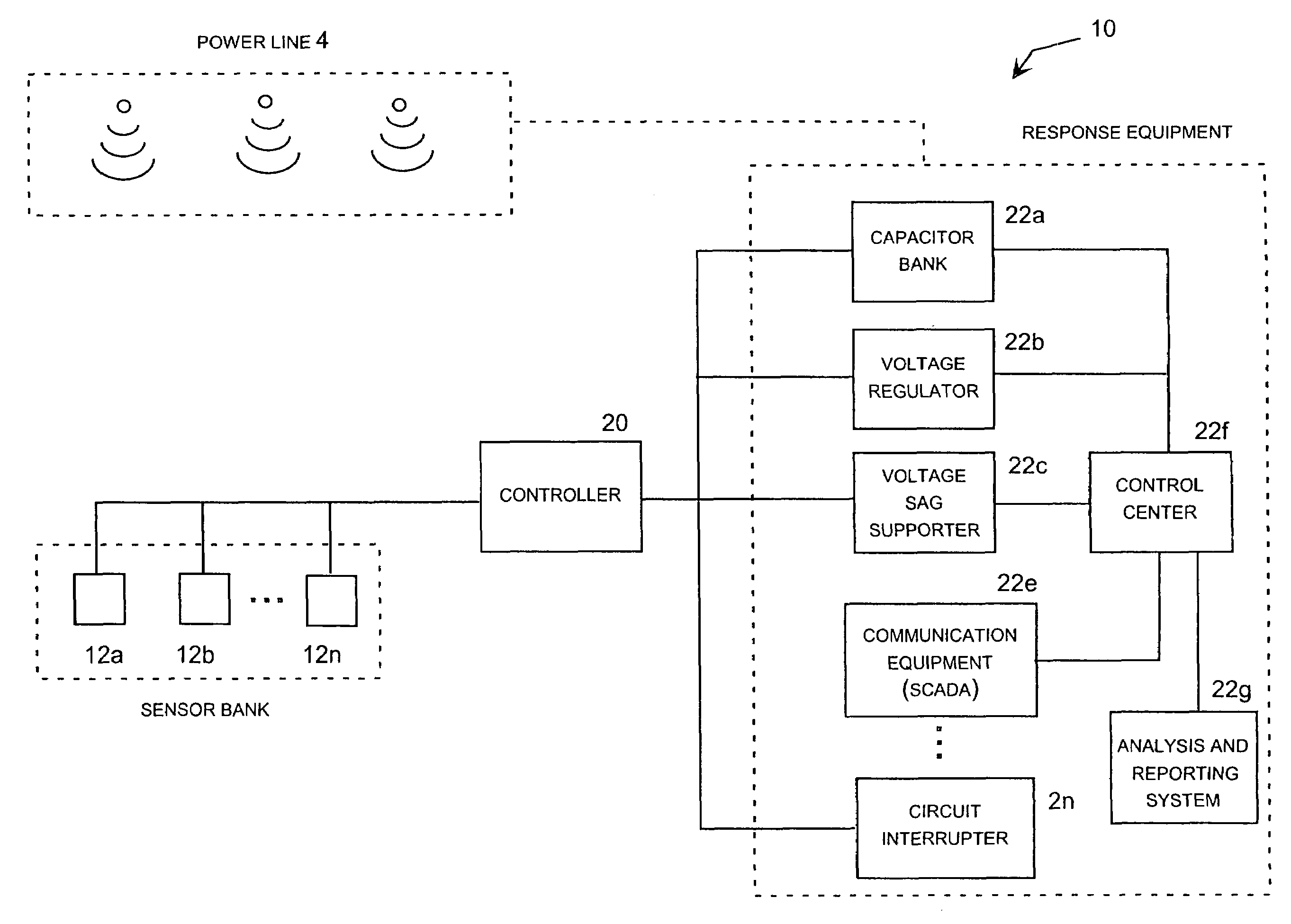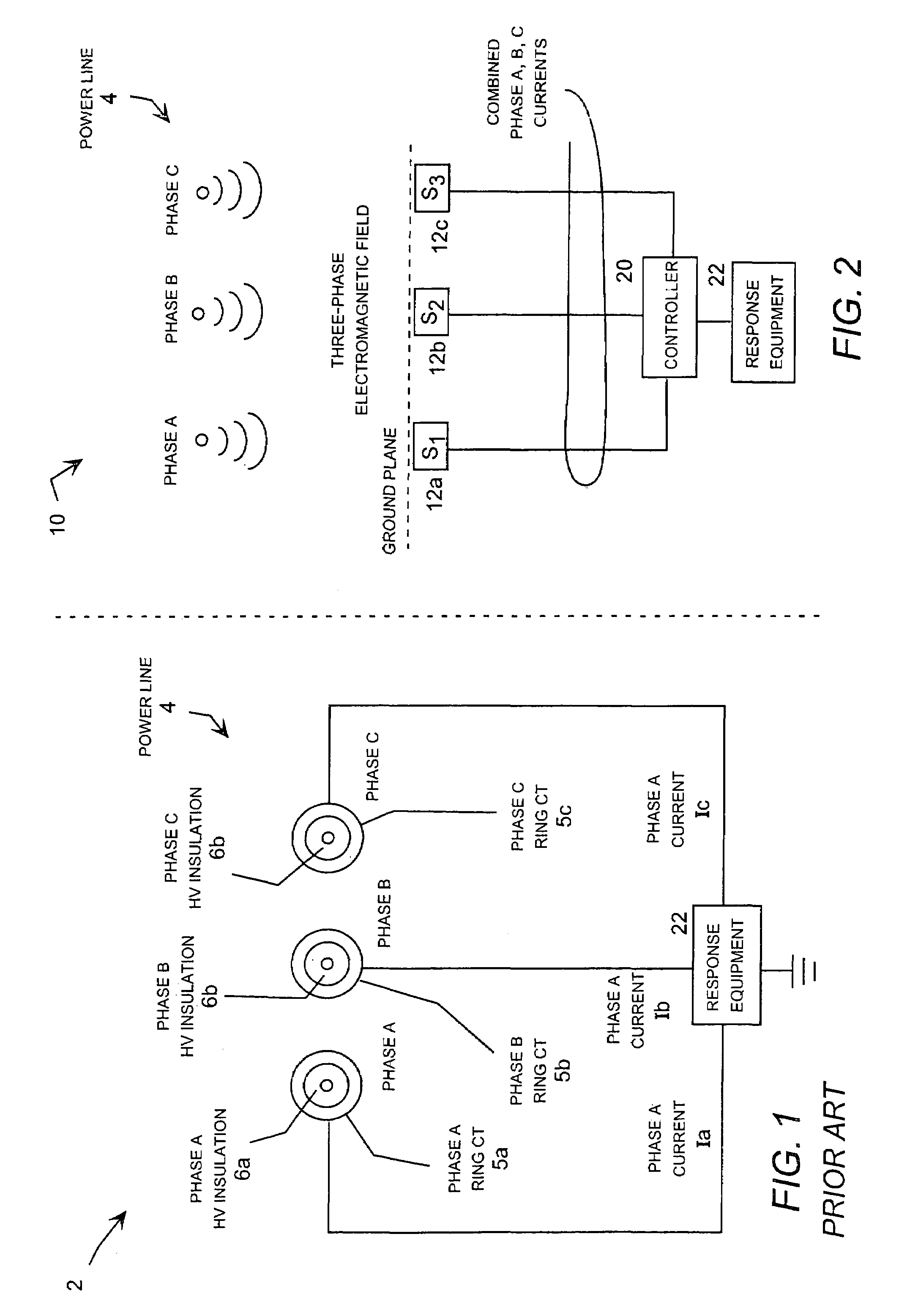Electric power monitoring and response system
a technology of electric power monitoring and response system, applied in the direction of instruments, electric devices, measurement using digital techniques, etc., can solve the problems of insufficient accuracy of measurement, inability to accurately and accurately measure the current of the high-voltage sensor, and high-voltage devices are quite expensive when applied at high-voltage. , to achieve the effect of improving the operation of response equipment, avoiding unnecessary and disruptive response actions, and more accurate and effective response actions
- Summary
- Abstract
- Description
- Claims
- Application Information
AI Technical Summary
Benefits of technology
Problems solved by technology
Method used
Image
Examples
Embodiment Construction
[0029]The present invention provides significant improvements in monitoring and fault protection equipment for multi-phase electric power lines. The specific embodiments use inexpensive magnetic field sensors, such as Hall Effect sensors, that are physically located beside (i.e., not surrounding) and removed from the phase conductors by a considerable distance. Preferably, the field sensors are located at or near the ground itself and at ground potential. This solves the high-voltage electrical insulation problem by using atmospheric air the insulating medium, which avoids special expensive insulation for the sensors. The measured magnetic field values received from the magnetic field sensors are combined with mathematical relationships and, in some cases.
[0030]To implement the system, a set of equations is derived for computing the values of a number of unknown system variables from an equal or greater number of measured sensor values. In general, the system variables may include p...
PUM
 Login to View More
Login to View More Abstract
Description
Claims
Application Information
 Login to View More
Login to View More - R&D
- Intellectual Property
- Life Sciences
- Materials
- Tech Scout
- Unparalleled Data Quality
- Higher Quality Content
- 60% Fewer Hallucinations
Browse by: Latest US Patents, China's latest patents, Technical Efficacy Thesaurus, Application Domain, Technology Topic, Popular Technical Reports.
© 2025 PatSnap. All rights reserved.Legal|Privacy policy|Modern Slavery Act Transparency Statement|Sitemap|About US| Contact US: help@patsnap.com



